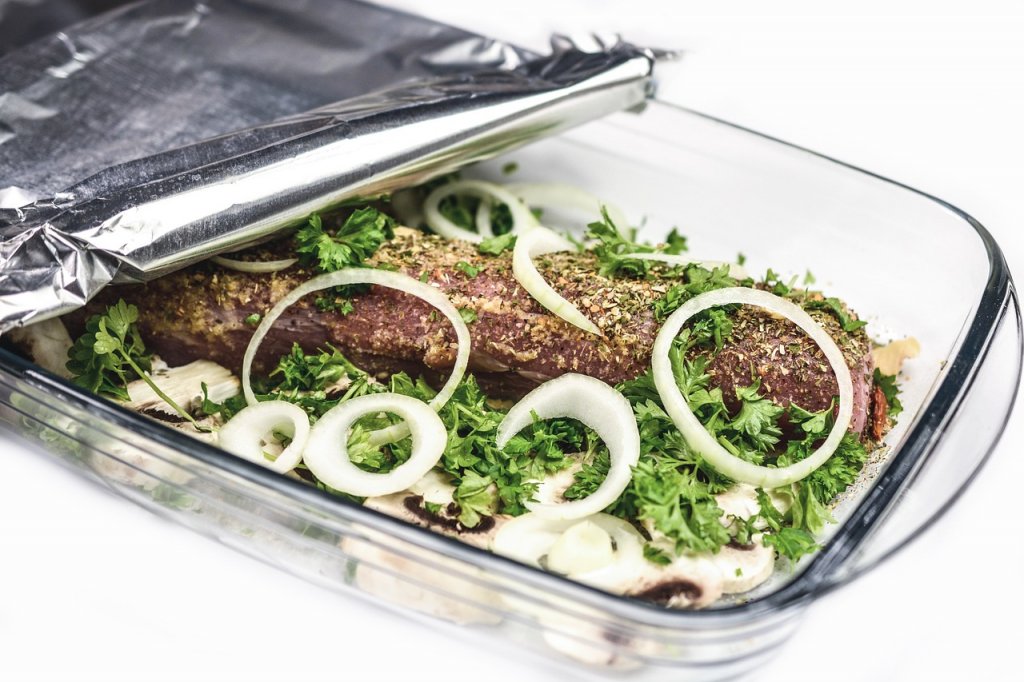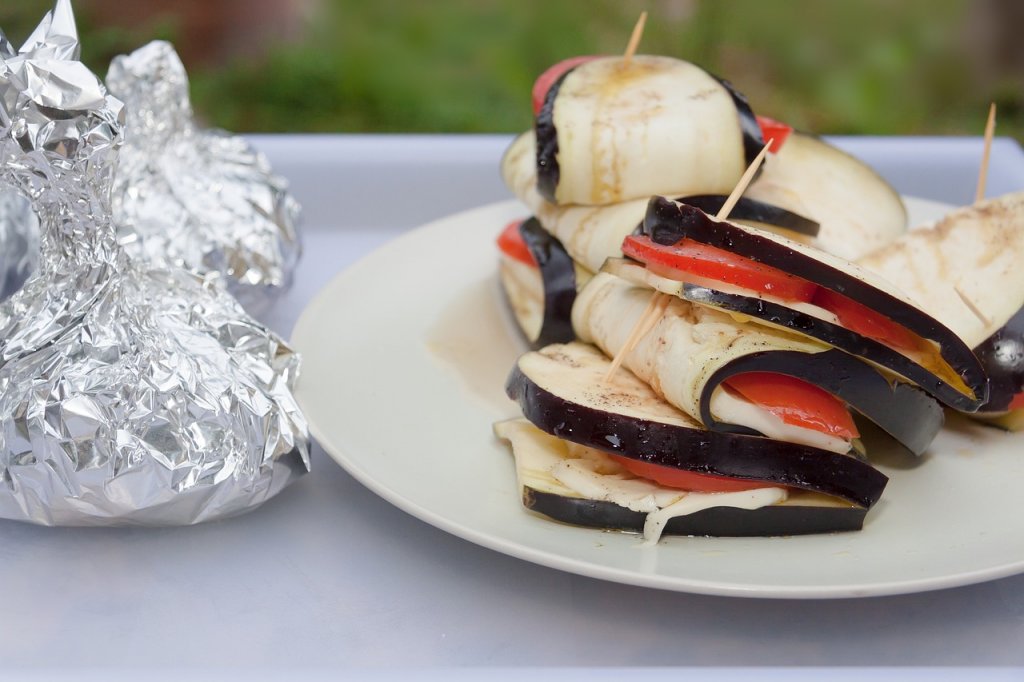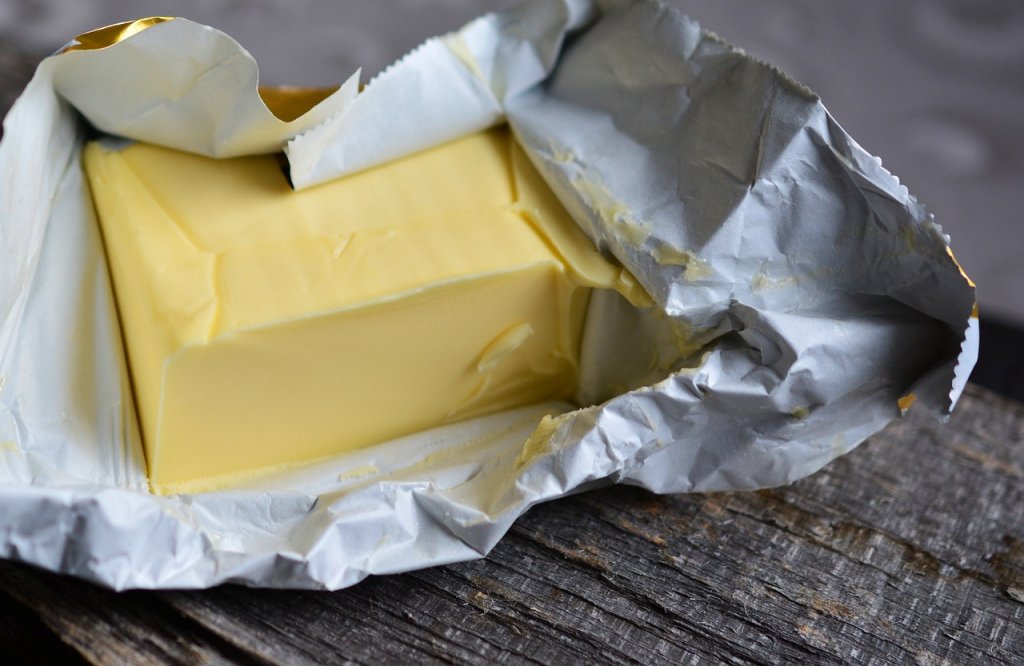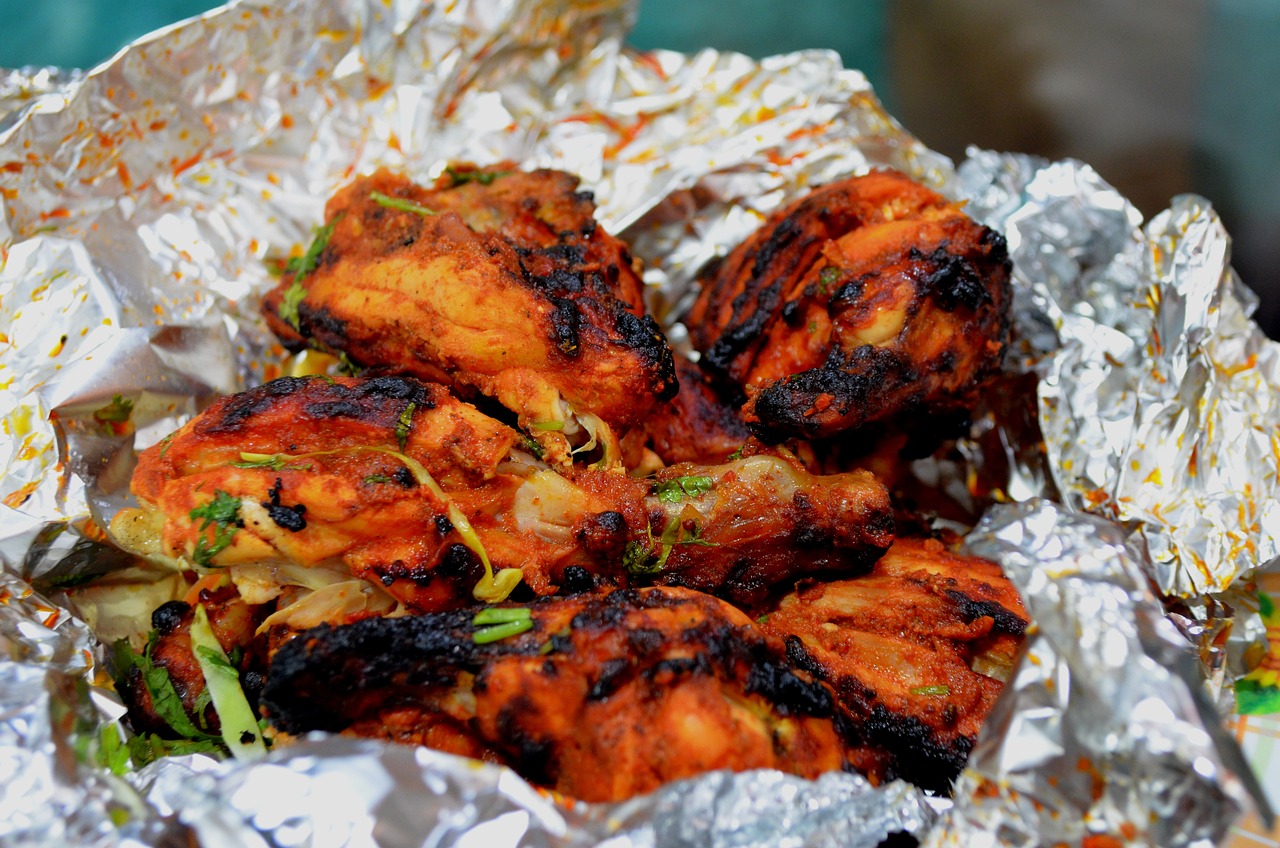Aluminum foil is a kitchen staple found in almost every household. It’s used for everything from wrapping leftovers to cooking delicious meals. But have you ever wondered about the impact of cooking food in aluminum foil on its nutritional value? Let’s dive deep into this topic to uncover the effects, benefits, and potential risks of using aluminum foil in our culinary adventures.
It can drain modest quantities of aluminum into food, especially acidic or pungent dishes, and at higher cooking temperatures. This can assist in supplement maintenance by catching dampness and intensity, which with canning be advantageous for specific nutrients and minerals. Foil additionally assists in dampness with controlling by keeping food from drying out and disseminating heat equally, advancing steady cooking. In any case, there are potential dangers related with expanded aluminum consumption, particularly for solid people with typical kidney capability. Elective wrapping materials like material paper or silicone wraps can assist with limiting aluminum filtering. All in all, aluminum foil offers benefits in cooking by controlling dampness and intensity, yet there is negligible gamble for a great many people.
Contents
- 1 What is Aluminum Foil?
- 1.1 History of Aluminum Foil in Cooking
- 1.2 How Aluminum Foil Affects Food Cooking
- 1.3 Chemical Reactions During Cooking
- 1.4 Health Concerns Related to Aluminum Foil
- 1.5 Nutritional Impact: Vitamins and Minerals
- 1.6 Impact on Proteins and Fats
- 1.7 Impact on Carbohydrates
- 1.8 Environmental Factors
- 1.9 Safe Practices for Using Aluminum Foil
- 1.10 Myths and Facts About Aluminum Foil
- 1.11 Fantasy: Aluminum foil causes malignant growth.
- 1.12 Fantasy: Foil-wrapped food loses all supplements.
- 1.13 Comparative Analysis: Aluminum Foil vs. Other Materials
- 1.14 Material Paper
- 1.15 Silicone Wraps
- 1.16 Glass or Artistic Cookware
- 1.17 Expert Opinions and Research Studies
- 1.18 Conclusion
- 1.19 FAQs
What is Aluminum Foil?
It is a thin sheet of aluminum metal. It’s incredibly versatile, making it a go-to tool in kitchens worldwide. Its primary use in cooking includes wrapping food to lock in moisture and flavor, covering dishes to prevent burning, and lining pans for easy cleanup. The flexibility and heat conductivity of the foil make it a favorite among cooks and bakers alike.

Here is a more point by point clarification of aluminum foil:
Properties of Aluminum Foil:
- Slight and Malleable: It is staggeringly meager, normally going from 0.006 to 0.024 millimeters. This slenderness makes it exceptionally pliable, meaning it tends to be handily formed and shaped around food or baking dish.
- Heat Conductor: Aluminum is a decent guide of intensity, and that implies it productively moves heat all through the foil. This property is useful for both in any event, cooking and temperature control.
- Impermeable to Dampness and Air: It goes about as a boundary to dampness and air. This keeps food from drying out during cooking and stockpiling and safeguards it from decay brought about via air openness.
- Reflective: It reflects heat radiation. This can be useful for controlling searing and crisping of food.
Applications in Cooking:
- Wrapping Food: As you referenced, a typical use is wrapping nourishment for cooking. This traps dampness and forestalls drying, particularly valuable for meats, vegetables, and dishes.
- Pocket Cooking: It pockets can be utilized to make individual divides or steam sensitive food sources. The encased climate advances in any event, cooking and holds tasty juices.
- Covering Dishes: Foil can be utilized to freely cover baking dishes to forestall unreasonable searing or drying out during the later phases of cooking.
- Fixing Pans: Fixing baking container with foil works on cleanup by getting trickles and oil.
- Heat Shaping: A few cooks use foil to make heat tents for unevenly molded dishes or to rapidly protect explicit regions from searing as well.
Extra Uses:
While essentially known for cooking, aluminum foil has different family applications:
- Freezing Food: Food can be wrapped firmly in foil for cooler capacity to forestall cooler consume.
- Saving Leftovers: Extras can be approximately covered with foil for cooler capacity to hold dampness and newness.
- Honing Knives: While not great for excellent blades, a folded piece of foil can be utilized when there’s no other option to fix a marginally dulled edge.
By understanding the properties and utilizations of the foil, you can use it really in your culinary experiences!
History of Aluminum Foil in Cooking
Aluminum foil has turned into a vital thing in current kitchens, because of its remarkable properties. Its process started in the mid twentieth 100 years with the presentation of tin foil, which was utilized for wrapping food things and different merchandise however left a metallic taste on food. The progress to aluminum foil started around the mid 1910s, with aluminum turning out to be all the more industrially suitable because of further developed refining techniques. Aluminum foil acquired prominence because of its solidness, absence of flavors, and better intensity conductivity, making it ideal for preparing and food capacity.
By the 1920s and 1930s, aluminum foil was generally utilized in Europe and the US for bundling chocolates, confections, and other food items that necessary impenetrable fixing. It additionally became well known for baking and broiling, as its capacity to endure high temperatures made it appropriate for stove use. Post-The Second Great War, aluminum foil turned into a family staple by the 1950s, with broad accessibility and comfort. Organizations like Reynolds Metals Organization (presently some portion of Reynolds Gathering Possessions) assumed a vital part in promoting aluminum foil in American families, with Reynolds Wrap, presented in 1947, becoming inseparable from aluminum foil.
In the late twentieth hundred years, aluminum foil saw different structures presented, including hard core and non-stick forms, taking care of various culinary requirements. The flexibility of aluminum foil extended past straightforward wrapping to incorporate barbecuing, freezing, and even expressions and artworks. Natural worries have affected the creation and utilization of aluminum foil, with numerous buyers and organizations now more cognizant about reusing utilized foil. A few makers have begun creating foil with a higher level of reused content.
All in all, its set of experiences in cooking is a demonstration of its remarkable properties and its versatility to address the issues of the two purchasers and the food business.

How Aluminum Foil Affects Food Cooking
It is an adaptable and essential gadget in the kitchen because of its novel actual properties. Its intensity conductivity, capacity to trap steam, and defensive characteristics make it a successful cooking medium. It guarantees even intensity dissemination, lessening the gamble of problem areas that can cause consumes or half-cooked food. This is especially valuable for baking, simmering, and barbecuing.
It likewise traps steam, establishing a clammy preparing climate that keeps food delicate and keeps it from drying out. The caught steam can upgrade the flavors and surfaces of the food, for example, vegetables holding their normal juices and supplements. Furthermore, aluminum foil goes about as a hindrance, shielding fragile food sources from direct intensity, particularly while barbecuing or baking.
The flexibility of aluminum foil makes it an important device in the kitchen for different cooking strategies, including baking, barbecuing, steaming, and broiling. Its particular applications incorporate broiling and baking, for example, holding dampness for succulent dishes, making fresh coverings for prepared products, barbecuing with aluminum foil parcels, and safeguarding newness for freezing and stockpiling.
Notwithstanding, aluminum foil can respond with specific food sources, for example, acidic and pungent ones, which might bring about a metallic taste or staining. To stay away from this, it’s prescribed to utilize a layer of material paper between the food and the foil while cooking acidic things like tomatoes or citrus natural products.
In spite of the fact that aluminum foil is recyclable, it should be cleaned of any food buildup prior to reusing. Shoppers are urged to reuse aluminum foil to limit natural effect and advance supportability.
All in all, aluminum foil’s intensity conductivity, capacity to trap steam, and defensive characteristics make it a significant device in the kitchen. It upgrades cooking effectiveness, accomplishes tasty, equitably prepared dinners, and stays a staple in present day cooking rehearses.
Chemical Reactions During Cooking
When cooking with aluminum foil, there are potential chemical reactions to consider. Aluminum can react with certain foods, especially those that are acidic, like tomatoes and citrus fruits. This reaction can cause aluminum to leach into the food. While the amount is generally considered minimal, it can accumulate over time with frequent use.
however it is essential to know about potential synthetic responses that can happen with particular sorts of food varieties. Acidic food sources, for example, tomatoes, citrus organic products, and vinegar-based marinades, can respond with aluminum foil, prompting aluminum particles filtering into the food. High salt substance can likewise advance aluminum filtering, establishing an electrolytic climate that speeds up aluminum erosion.
The ramifications of aluminum draining incorporate negligible filtering, which is by and large inside wellbeing limits laid out by wellbeing specialists. Be that as it may, with incessant and delayed utilization of aluminum foil, particularly with acidic or pungent food sources, there is potential for aluminum collection, which could prompt medical problems like neurodegenerative infections. To forestall aluminum filtering, one can utilize defensive layers, for example, putting a layer of material paper between the food and the aluminum foil, or utilizing non-responsive cookware, for example, tempered steel or glass, which don’t respond with acidic or pungent fixings.
More limited cooking times can likewise lessen the potential for compound responses. Aluminum normally shapes a slim oxide layer when presented to air, giving a few insurance against additional oxidation and reactivity. In any case, this layer can be undermined by acidic or pungent food varieties, prompting expanded filtering.

Food appearance and taste can likewise be impacted by its responses, remembering staining for acidic food varieties and a metallic desire for food varieties that have responded with aluminum foil. By understanding these responses and avoiding potential risk, one can limit aluminum openness and partake in the advantages of utilizing aluminum foil securely.
Health Concerns Related to Aluminum Foil
Aluminum openness has been connected to different wellbeing concerns, including likely neurotoxic impacts and bone issues. Elevated degrees of aluminum have been related with mental degradation and other neurological hindrances, possibly influencing memory and mental capability. Other medical problems incorporate bone issues, as aluminum can slow down calcium and phosphorus digestion, prompting osteoporosis.
Word related openness to aluminum residue or vapor, for example, in aluminum fabricating plants, has been connected to respiratory issues like asthma and lung fibrosis. Aluminum filtering from foil is likewise a worry, with the sum drained differing relying upon variables like temperature, cooking time, and food nature. Acidic and pungent food varieties are especially inclined to making aluminum drain.
Proposals for decreasing aluminum openness incorporate keeping away from acidic food varieties, utilizing elective materials like material paper, glass, or treated steel, and putting defensive hindrances like material paper among food and foil. Control is critical, as offsetting aluminum foil use with other cooking strategies and materials can assist with moderating likely dangers. Remaining informed about the most recent examination on aluminum openness and its wellbeing effects can assist people with pursuing better choices in regards to their cooking practices and in general openness to aluminum.
All in all, while aluminum foil in cooking brings about some aluminum draining into food, the sums are for the most part low and inside OK security limits. Given the potential wellbeing gambles related with elevated degrees of aluminum openness, it is reasonable to limit superfluous openness where conceivable. By understanding the variables adding to aluminum filtering and taking on commonsense systems to diminish it, people can keep on utilizing aluminum foil securely while relieving potential wellbeing chances.

Nutritional Impact: Vitamins and Minerals
Cooking with aluminum foil has both benefits and potential drawbacks in terms of preserving vitamins and minerals. It promotes even cooking, reducing the cooking time and minimizing the loss of heat-sensitive vitamins like vitamin C and B. Additionally, it traps steam, creating a moist cooking environment that helps maintain the integrity of water-soluble vitamins and minerals. This method is more effective than boiling, which can leach nutrients into the cooking water.
However, there are concerns about aluminum leaching into food and interacting with its mineral content. Aluminum can bind with certain minerals, potentially affecting their absorption and nutritional value. For example, aluminum can bind with phosphorus in food, forming aluminum phosphate, which is less easily absorbed by the body, potentially reducing the availability of phosphorus, essential for bone health and energy production. Similar interactions can occur with iron and calcium, potentially impacting their bioavailability and absorption.
Vitamins such as vitamin C and some B vitamins are sensitive to heat and light, and cooking methods involving prolonged exposure to high temperatures can degrade these vitamins. Using aluminum foil to wrap food can help protect these vitamins from excessive heat and light exposure, thus preserving their nutritional value. Fat-soluble vitamins like Vitamins A, D, E, and K are less affected by cooking methods involving aluminum foil.
To maximize nutritional benefits, optimize cooking methods by aiming for shorter cooking times and moderate temperatures. Avoid using aluminum foil for highly acidic foods and opt for alternatives like parchment paper or non-reactive cookware when cooking dishes with tomatoes, citrus fruits, or vinegar. Use a combination of cooking methods to balance nutrient preservation, such as steaming vegetables before finishing them in foil. Proper storage of leftovers, using airtight containers and minimizing reheating, can also help preserve vitamins and minerals in cooked food.
Impact on Proteins and Fats
It can significantly impact the structure of proteins and fats during cooking. It helps maintain a consistent temperature, which influences protein denaturation and fat stability. This process makes proteins more digestible and enhances flavor and texture. The moisture retained by aluminum foil prevents food from drying out, making it more suitable for delicate proteins like fish and poultry.
Protein integrity remains intact, as essential amino acids are preserved, and water-soluble nutrients are minimized due to the even cooking and moisture retention properties of aluminum foil. Fats, particularly those found in fatty fish and meats, can react with aluminum when cooked, but this reaction is typically minor and does not significantly impact their nutritional value.
Cooking with aluminum foil helps stabilize fats by protecting them from direct heat and oxygen exposure, particularly for unsaturated fats that are more prone to oxidation and degradation. This promotes even fat rendering, resulting in a more succulent texture. However, aluminum foil can also prevent the crisping and browning of the exterior of meats and other foods.
Practical tips for cooking with aluminum foil include foil tenting, which involves covering meat with foil for most of the cooking time to retain moisture, then removing the foil in the final stages to allow for browning and crisping. Ventilation creates small vents in the aluminum foil when wrapping foods to allow steam to escape, preventing overly moist and soggy food while still protecting it from direct heat.
To minimize reactions, use alternatives like parchment paper or silicone baking mats for acidic foods and avoid prolonged contact with fatty or protein-rich foods, especially at high temperatures. By employing these techniques, you can maximize the benefits of using aluminum foil while minimizing any potential downsides.

Impact on Carbohydrates
Cooking with aluminum foil positively affects carbs, including starches and sugars. These impacts are for the most part minor. Carbs, including starches and sugars, stay stable mixtures when cooked in aluminum foil, saving their construction and surface. Dampness maintenance given by aluminum foil keeps up with the surface and consistency of carb rich food sources, like enclosing bland vegetables by foil.
The glycemic record (GI) measures how rapidly food sources raise blood glucose levels, and cooking strategies can influence it. Food sources prepared in aluminum foil could encounter slight changes in their GI, yet these progressions are normally immaterial. Cooking dull food sources in aluminum foil can make them gentler and more edible, possibly prompting a somewhat higher GI. Nonetheless, this impact is generally insignificant and improbable to altogether affect by and large carb admission or glucose levels for the vast majority.
Model food sources for cooking carb rich food sources in aluminum foil incorporate potatoes, grains, and rice. Baking potatoes in aluminum foil holds dampness, bringing about a delicate, rich surface. Grains and rice can likewise be cooked in aluminum foil parcels, keeping up with their construction and surface without essentially affecting their glycemic file.
Cooking carb rich food sources in aluminum foil assists save with watering solvent nutrients and minerals that can be lost during other cooking techniques. Fiber content remaining parts unaffected when cooked in aluminum foil, making food sources like vegetables and entire grains hold their fiber content.
Commonsense ways to cook sugar rich food sources in aluminum foil incorporate in any event, cooking, flavor upgrade, adjusting cooking strategies, and forestalling overcooking. By understanding these impacts and utilizing commonsense cooking tips, you can upgrade the surface, flavor, and healthy benefit of food varieties prepared in aluminum foil.
Environmental Factors
Aluminum foil is a popular kitchen tool, but its use comes with significant environmental concerns. The energy-intensive production process involves extraction and processing of bauxite ore, which leads to deforestation, habitat destruction, and toxic byproducts like red mud. Smelting the bauxite requires large amounts of electricity, contributing to greenhouse gas emissions. This process also emits significant amounts of carbon dioxide (CO2), contributing to climate change. Other pollutants, such as sulfur dioxide (SO2) and nitrogen oxides (NOx), can be released, contributing to air pollution and acid rain.
The production of aluminum generates waste materials, including red mud and spent pot lining, which can leach harmful chemicals into soil and water if not managed properly. These pollutants pose risks to ecosystems and human health. Aluminum foil is often discarded after a single use, leading to substantial waste. Its lightweight nature makes it easy to accumulate in waste streams, contributing to solid waste management issues.
Recycling aluminum foil requires significantly less energy than producing new aluminum from bauxite ore, making it an effective way to reduce its environmental footprint. However, not all recycling centers accept aluminum foil due to contamination and thinness. Consumers can help by ensuring aluminum foil is clean before recycling and collecting used foil into larger balls.
Sustainable alternatives include reusable wraps, baking and roasting dishes with lids, and grill mats and baskets made from reusable materials. By adopting these practices, consumers can enjoy the convenience of aluminum foil while minimizing its environmental footprint.

Safe Practices for Using Aluminum Foil
To minimize aluminum exposure while cooking, consider these tips:
Here are a few nitty gritty rules for limiting the potential dangers related with preparing and putting away food in aluminum foil:
1. Try not to Cook Profoundly Acidic Food varieties in Aluminum Foil
Profoundly acidic food varieties, for example, tomatoes, citrus natural products, and vinegar-based marinades, can respond with aluminum foil, prompting the draining of aluminum into the food. To forestall this response, try not to cook these food varieties straightforwardly in aluminum foil.
2. Use Material Paper as an Obstruction
While cooking food sources that might respond with aluminum foil, for example, acidic dishes or those containing salt, use material paper as a defensive boundary between the food and the foil. This makes a layer that forestalls direct contact between the food and the aluminum, decreasing the gamble of aluminum draining into the food.
3. Decide on Lower Cooking Temperatures and More limited Cooking Times
To limit the potential for aluminum filtering, pick lower cooking temperatures and more limited cooking times while utilizing aluminum foil. This lessens the span of openness to warm, which can assist with moderating the gamble of aluminum moving to the food. Furthermore, lower temperatures can assist with saving the healthful substance of the food.
4. Limit the Utilization of Foil for Food Stockpiling
While aluminum foil can be helpful for putting away extras, restricting its utilization for this purpose is ideal. All things being equal, pick reusable holders made of glass or treated steel for food capacity. These choices are more secure for long haul stockpiling and diminish the gamble of aluminum filtering into the food, particularly overstretched periods.
By observing these rules, you can partake in the comfort of aluminum foil while limiting potential wellbeing chances related with aluminum openness.
Myths and Facts About Aluminum Foil
Here are a few nitty gritty clarifications to expose normal legends about aluminum foil:
Fantasy: Aluminum foil causes malignant growth.
The fact that aluminum foil causes malignant growth makes fact: there no decisive proof. While aluminum can filter into food while preparing with foil, the sums are regularly insignificant and inside safe cutoff points. The Food and Medication Organization (FDA) and other wellbeing specialists have considered aluminum foil ok for food use. Be that as it may, it’s fundamental for use aluminum foil appropriately, particularly while cooking acidic or pungent food varieties, to limit likely dangers.
Fantasy: Foil-wrapped food loses all supplements.
Fact: Supplement misfortune while cooking with aluminum foil is negligible and frequently tantamount to other cooking techniques. Aluminum foil can assist with safeguarding the dietary substance of food by giving in any event, cooking and dampness maintenance. While a few water-solvent nutrients might drain into the foil during cooking, the general supplement misfortune is for the most part immaterial. Moreover, the advantages of utilizing aluminum foil, for example, saving dampness and improving flavor, offset any minor supplement misfortune.
Comparative Analysis: Aluminum Foil vs. Other Materials
Here is a more definite clarification of elective choices to aluminum foil for cooking and baking:
Material Paper
Better for Baking: Material paper is an incredible option in contrast to aluminum foil for baking. It gives a non-stick surface, making it simple to eliminate heated products from container without staying or tearing.
Restricted Dampness Retention: While material paper is perfect for forestalling staying, it doesn’t offer a similar dampness maintenance as foil. Food varieties might dry out more rapidly when cooked or put away in material paper, particularly for longer periods.

Silicone Wraps
Reusable and Earth Friendly: Silicone wraps are a practical choice for wrapping food. They are reusable, dispensing with the requirement for single-use materials like aluminum foil or material paper. This lessens squander and ecological effect.
Expensive: One disadvantage of silicone wraps is that they can be more costly forthright contrasted with expendable choices like foil or material paper. Notwithstanding, their solidness and reusability can make them practical over the long haul.
Glass or Artistic Cookware
Incredible for Baking: Glass or artistic baking dishes are great for baking. They give even intensity dispersion and brilliant intensity maintenance, bringing about impeccably prepared products.
Less Helpful for Wrapping and Grilling: While glass or ceramic cookware is great for baking, it may not be as advantageous for wrapping food varieties or barbecuing. These materials are not adaptable like foil or silicone wraps, making them less reasonable for folding food varieties or molding over barbecuing fixings.
Every elective choice to aluminum foil enjoys its benefits and constraints. Picking the ideal choice relies upon the particular cooking or baking necessities, as well as private inclinations for comfort, cost, and ecological effect.
Expert Opinions and Research Studies
Nutritionists and culinary specialists frequently acclaim the accommodation and viability of aluminum foil in preparing and food protection, refering to its capacity to circulate heat equitably, trap steam, and keep up with dampness. Notwithstanding, they additionally alert against potential wellbeing gambles, for example, aluminum draining into food, especially while cooking acidic or pungent dishes, and its possible connect to medical problems like neurotoxicity and Alzheimer’s infection.
Research concentrates on the wellbeing of aluminum foil use give blended results, with most investigations proposing incidental use is protected, yet less agreement on the security of successive or delayed use. A few investigations propose that how much aluminum drained during cooking is insignificant and improbable to present huge wellbeing dangers to most people.
Incessant utilization of aluminum foil, particularly with acidic or pungent food sources, may prompt higher aluminum openness over the long haul, raising worries about the aggregate impacts of aluminum consumption on wellbeing, especially for weak populaces like youngsters and those with kidney illness.
Taking everything into account, people ought to consider these contrasting points of view and settle on informed decisions in light of their cooking needs and worries about aluminum openness. Control and utilizing options when fitting can assist with alleviating expected gambles while as yet partaking in the advantages of aluminum foil in cooking.

Conclusion
Cooking with aluminum foil provides various benefits, such as even heat distribution and moisture retention, which contribute to well-cooked and flavorful dishes. However, it’s crucial to be mindful of potential aluminum exposure and its associated health implications. By adopting safe cooking practices, such as avoiding highly acidic or salty foods in direct contact with foil, and considering alternatives like parchment paper or reusable silicone wraps, you can enjoy the convenience of aluminum foil while minimizing any potential risks.
Moderation, awareness, and informed decision-making are key to using aluminum foil safely and responsibly in the kitchen.In conclusion, cooking with aluminum foil provides various benefits, such as even heat distribution and moisture retention, which contribute to well-cooked and flavorful dishes. However, it’s crucial to be mindful of potential aluminum exposure and its associated health implications.
By adopting safe cooking practices, such as avoiding highly acidic or salty foods in direct contact with foil, and considering alternatives like parchment paper or reusable silicone wraps, you can enjoy the convenience of aluminum foil while minimizing any potential risks. Moderation, awareness, and informed decision-making are key to using aluminum foil safely and responsibly in the kitchen.
FAQs
Does cooking with aluminum foil affect food flavor?
Cooking with aluminum foil can enhance food flavor by retaining moisture and heat, though it typically does not impart any metallic taste unless used with highly acidic foods.
Is it safe to use aluminum foil in the oven?
Yes, it is safe to use aluminum foil in the oven. However, avoid direct contact with heating elements to prevent fire hazards.
Can aluminum foil cause cancer?
There is no solid evidence linking aluminum foil to cancer. The amounts of aluminum that leach into food are minimal and considered safe for occasional use.
How can I reduce aluminum exposure while cooking?
To reduce aluminum exposure, avoid cooking acidic foods in foil, use parchment paper as a barrier, cook at lower temperatures, and limit the use of aluminum foil for food storage.
What are the best alternatives to aluminum foil for cooking?
Great alternatives include parchment paper, silicone wraps, and glass or ceramic cookware. These options can be safer and more environmentally friendly.

